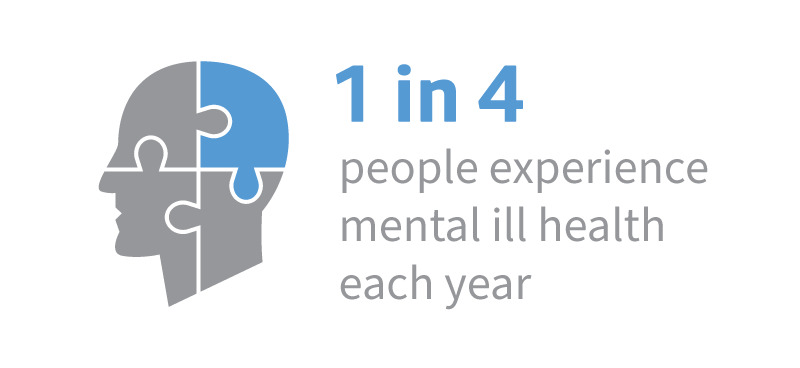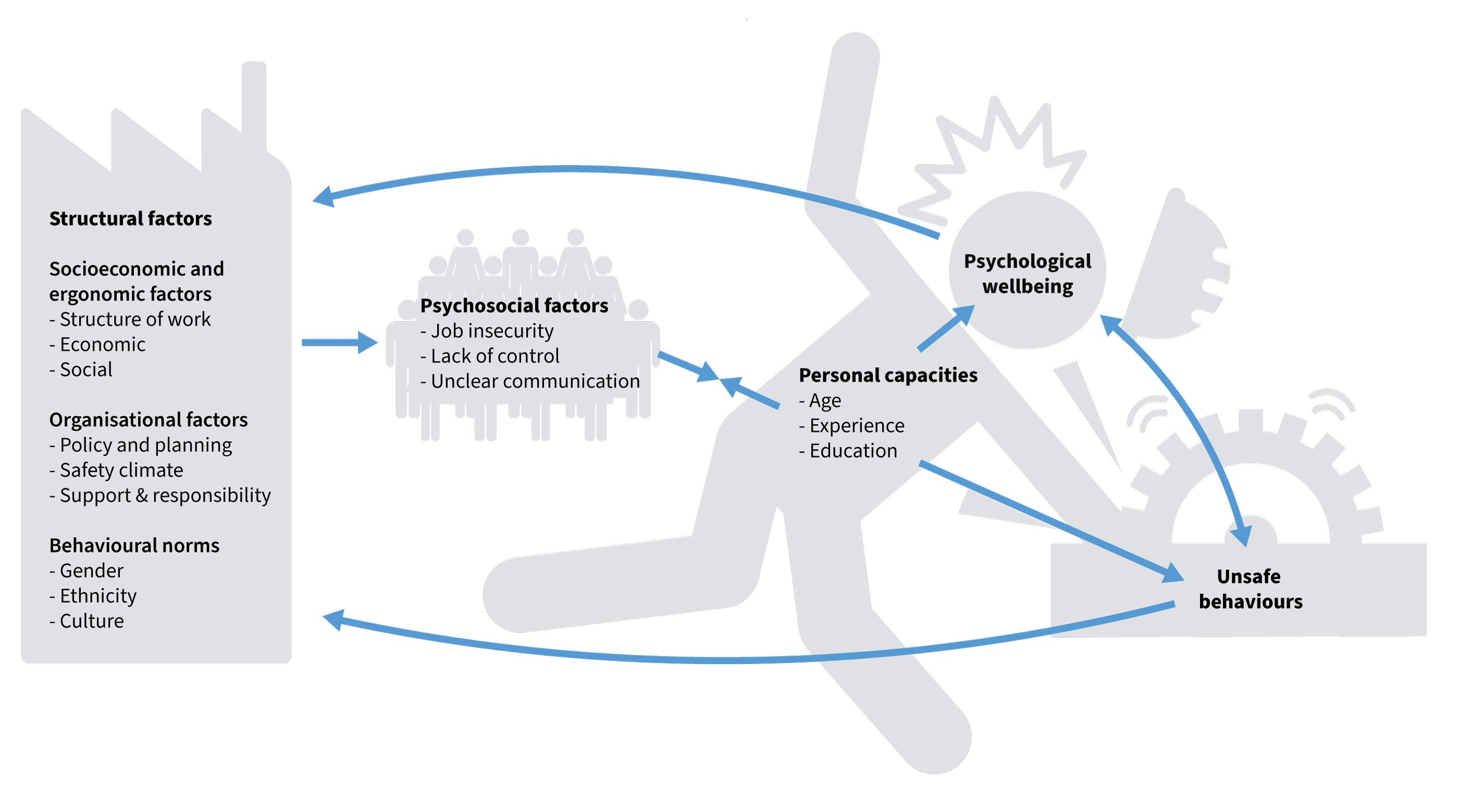Mental health: The global picture
In 2017 it was estimated that around 792 million people worldwide were living with at least one form of mental health condition; this is slightly over 10.7% of the global population. Some predict that if current trends continue, mental health will become the leading cause of mortality and morbidity worldwide by the end of the next decade. With a majority of people spending one-third of their adult life at work, and around 1 in 4 people experiencing mental ill health each year, workers are likely to experience an extensive amount of time dealing with a wide spectrum of mental health issues.

Psychological wellbeing and the workplace
The impact of psychological wellbeing (an individual's emotional health and overall functioning) on the productivity and work experiences of employees has been well documented. Yet much of the focus on safety at work concerns physical health; the impact of mental health on safety is less well known. The Foundation commissioned a report from Nottingham Trent University to focus on what research exists on psychological wellbeing in relation to work, focusing on five key infrastructure sectors – maritime, energy, construction, engineering, food and digital.
The report found that employees respond to feelings about their work environment in ways that can give rise to unsafe behaviours and other impacts on safety as well as decreased productivity. These, in turn, shape the safety climate of an organisation and create a continuous feedback loop.
While many roles in the five sectors involve hard physical work, it is feelings about the work environment rather than the physical nature of the work itself that are critical to psychological wellbeing. Employees’ feelings are centred around a range of psychosocial factors (things that may affect workers' psychological response to their work and workplace conditions) which include things such as job security and satisfaction, excessive workloads, lack of control and influence, unclear communication, and boring or repetitive work. These are experienced in very different ways by employees, depending on their role, age or experience. Each sector has its own unique combination of psychosocial factors.
The psychological factors arise from a range of structural aspects of work that relate to an occupational setting such as the human factors of the work environment, the ways in which work is organised, and expected behaviours within the workplace (for example, a masculine culture).

Impact of the 4th Industrial Revolution (4IR) and COVID-19
The evidence around the impact of the 4IR on psychological wellbeing and safety is mixed. What is starting to emerge is some sense of the specific challenges and opportunities this offers. For example, the increasing use of smart technologies is negatively impacting on psychological wellbeing through increasing time pressures, work interruptions, multitasking and the erosion of work and life boundaries. But these technologies also offer innovative means to monitor mental health.
The impact of COVID-19 and the return to work is also covered in the report. While some employees across the five sectors have acted as ‘frontline’ or ‘key workers’, others have worked remotely, with a risk of issues such as overworking, lack of exercise, loneliness and lack of support all significantly influencing psychological wellbeing during this period.
What works
The report includes numerous examples of good practice in relation to psychological wellbeing across the five sectors. It notes that there seems to be no one-size-fits-all solution, however, understanding the relationship between structural aspects of work and the psychosocial factors that they give rise to appears to be key to designing and implementing successful interventions. Interventions that are holistic - tailored to the specific relationships between structural and psychosocial factors - have overwhelmingly been demonstrated to be the most effective strategies rather than focussing solely on support to individuals with poor mental health. The report ends with a set of recommendations on how to best encourage the adoption of holistic interventions.
The way forward
Armed with the findings of the report and its recommendations the Foundation believes the following key steps need to be taken to improve psychological wellbeing and safety at work:
- Employers should treat psychological wellbeing and physiological health as equally important when reviewing and evaluating safety practices in occupational settings. This is a fundamental principle for securing improvements in safety practices.
- Better systems for recording data around psychological wellbeing should be developed. These need to be both sensitive to the stigma around declaring mental health conditions and able to distinguish between transient fluctuations in mood and longer terms impacts.
- Practical tools should be developed that embed the learning from the report and support organisations to map the experiences of employees on an individual basis, and to understand the combination of structural and psychosocial factors at play within their organisation, and how these are experienced by employees.
- Sustained interventions should be developed that are embedded in the long-term strategies of organisations, and are developed with buy-in across the workforce - rather than focusing primarily on supporting individual employees in coping with workplace stress.
The 4IR will result in significant changes to the way that work is organised across sectors involved in critical infrastructure. The current evidence suggests that it is not possible to make global evaluations of how smart technologies will impact on psychological wellbeing. In line with the recommendations above, it is knowledge of the specific psychosocial factors in play within a given organizational setting that will be crucial to understanding how the 4IR shapes safety-relevant behaviours.
As employees begin to adjust to the new ways of working that have emerged during the COVID-19 pandemic, the key psychosocial factors are a perception of clarity in the information provided and a feeling of being valued by employers. Managing successful transitions during and after the pandemic will require organisations to address both issues systematically.





